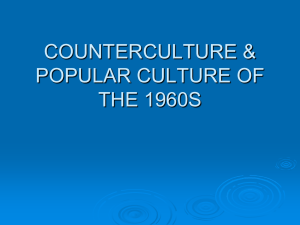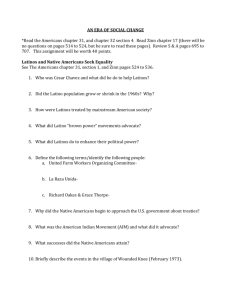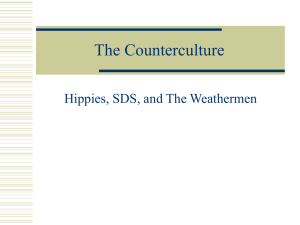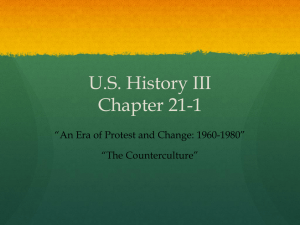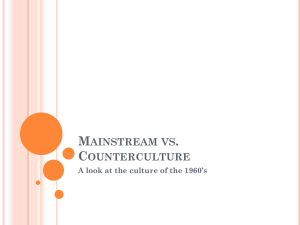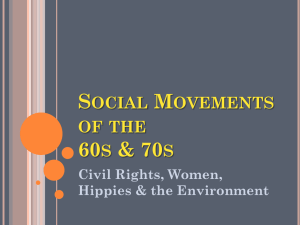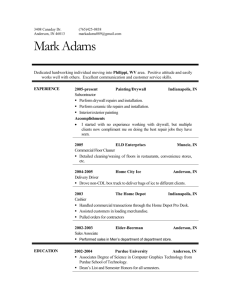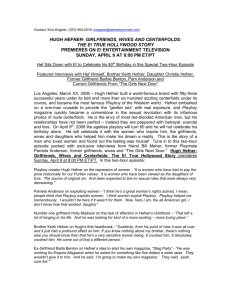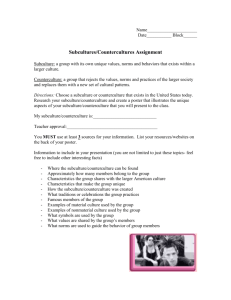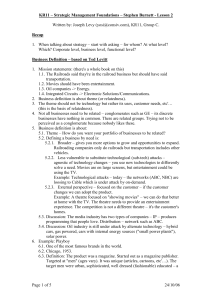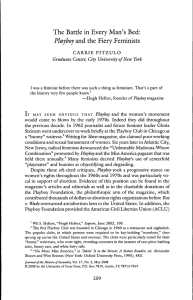Reading Assignment Study Questions
advertisement
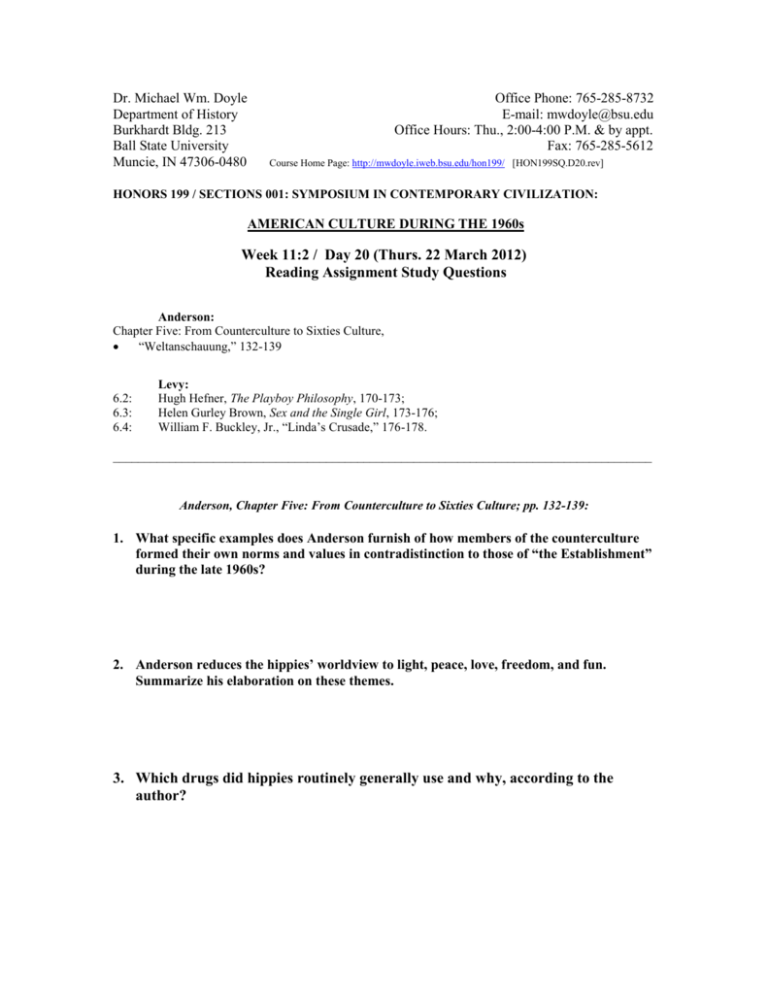
Dr. Michael Wm. Doyle Department of History Burkhardt Bldg. 213 Ball State University Muncie, IN 47306-0480 Office Phone: 765-285-8732 E-mail: mwdoyle@bsu.edu Office Hours: Thu., 2:00-4:00 P.M. & by appt. Fax: 765-285-5612 Course Home Page: http://mwdoyle.iweb.bsu.edu/hon199/ [HON199SQ.D20.rev] HONORS 199 / SECTIONS 001: SYMPOSIUM IN CONTEMPORARY CIVILIZATION: AMERICAN CULTURE DURING THE 1960s Week 11:2 / Day 20 (Thurs. 22 March 2012) Reading Assignment Study Questions Anderson: Chapter Five: From Counterculture to Sixties Culture, “Weltanschauung,” 132-139 6.2: 6.3: 6.4: Levy: Hugh Hefner, The Playboy Philosophy, 170-173; Helen Gurley Brown, Sex and the Single Girl, 173-176; William F. Buckley, Jr., “Linda’s Crusade,” 176-178. ______________________________________________________________________________________ Anderson, Chapter Five: From Counterculture to Sixties Culture; pp. 132-139: 1. What specific examples does Anderson furnish of how members of the counterculture formed their own norms and values in contradistinction to those of “the Establishment” during the late 1960s? 2. Anderson reduces the hippies’ worldview to light, peace, love, freedom, and fun. Summarize his elaboration on these themes. 3. Which drugs did hippies routinely generally use and why, according to the author? 2 4. Where did the idea of “free love” originate and in what way was it different during the heyday of the hippie counterculture? Which specific traditional values did this form of sexuality undermine? 5. Hippies challenged the division between “work” and “play.” What examples does Anderson cite to illustrate representative beliefs on this issue? 6. Anderson identifies humor as a mode of social thought within the counterculture. Give two examples of hippie humor as furnished by Anderson. What value(s) do you think this humor was an expression of? 7. Anderson asks, “How could hippies ‘afford’ their lifestyle”? In what ways did they earn their livelihood and how did these reflect their world view? 8. Concisely discuss the various ways that spirituality was expressed within the counterculture. Levy, Document 6.2: Hugh Hefner, The Playboy Philosophy, pp. 170-173: 1. According to Levy, how was Hefner’s Playboy Philosophy related to the counterculture? What were its wellsprings and how did it portray women? 2. Hefner cites Archibald Henderson on George Bernard Shaw for helping him conceive of his magazine’s name, Playboy. According to Hefner, how does he intend this word to be understood by his readership? 3 3. How does Hefner justify the content of his magazine? Who is its target demographic? Levy, Document 6.3: Helen Gurley Brown, Sex and the Single Girl, pp. 173-176: 1. According to Levy, what role did Brown play in the Sixties’ sexual revolution? How did her views on women compare with Hugh Hefner’s in Document 6.2? 2. What does Brown think is the “single girl’s biggest problem”? 3. Why does Brown believe that the single woman is “the newest glamour girl of our time”? Levy, Document 6.4: William F. Buckley, Jr., “Linda’s Crusade,” pp. 176-178: 1. According to Buckley, what did the Barnard College administration do after discovering that Linda LeClair was sharing an apartment with a fellow Columbia student who was male? Based on the tone he uses to discuss this incident, how does Buckley view the University’s actions? 2. What is Buckley’s opinion on LeClair’s lifestyle and how does he justify it?
